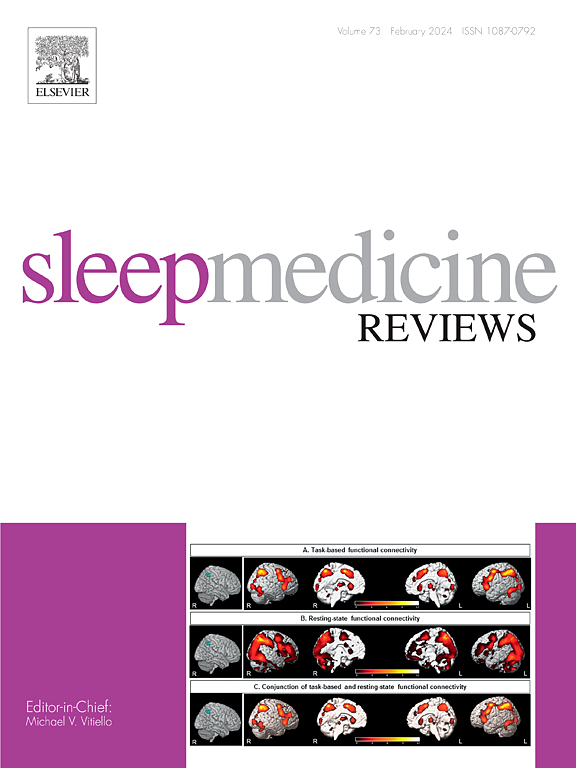Sleep abnormalities in mouse models of depression: a systematic review
IF 9.7
1区 医学
Q1 CLINICAL NEUROLOGY
引用次数: 0
Abstract
Sleep disturbances are highly prevalent in people with major depressive disorder (MDD) and contribute to a vicious cycle that exacerbates both conditions. Electroencephalographic (EEG)-based sleep features of people with MDD are well described in systematic reviews and meta-analyses. However, sleep abnormalities in mouse models of MDD remain poorly characterized. We conducted a systematic review to evaluate the face validity of mouse models of MDD in relation to sleep alterations. Among the 22 articles we identified, the most consistently represented features of sleep disturbances in mouse models were increased rapid eye movement (REM) sleep and non-REM (NREM) sleep fragmentation. A blunted response to sleep deprivation was reported but only in a few studies and requires further investigation. Data regarding delta and theta power were limited and showed heterogeneous results. By providing a comprehensive summary of all mouse models in the field, our study serves as a resource to confirm the utility of animal models and guide researchers in studying sleep alterations in MDD.
抑郁症小鼠模型中的睡眠异常:一项系统综述
睡眠障碍在重度抑郁症(MDD)患者中非常普遍,并导致了恶性循环,加剧了这两种疾病。基于脑电图(EEG)的睡眠特征在系统综述和荟萃分析中得到了很好的描述。然而,在MDD小鼠模型中,睡眠异常的特征仍然很差。我们进行了一项系统综述,以评估与睡眠改变有关的重度抑郁症小鼠模型的面部有效性。在我们确定的22篇文章中,小鼠模型中最具代表性的睡眠障碍特征是快速眼动(REM)睡眠增加和非快速眼动(NREM)睡眠碎片化。据报道,对睡眠剥夺的反应迟钝,但这只是在少数研究中,需要进一步的调查。关于δ和θ功率的数据有限,结果也不尽相同。通过对该领域所有小鼠模型的全面总结,我们的研究为确认动物模型的实用性提供了资源,并指导研究人员研究重度抑郁症的睡眠改变。
本文章由计算机程序翻译,如有差异,请以英文原文为准。
求助全文
约1分钟内获得全文
求助全文
来源期刊

Sleep Medicine Reviews
医学-临床神经学
CiteScore
20.10
自引率
3.80%
发文量
107
期刊介绍:
Sleep Medicine Reviews offers global coverage of sleep disorders, exploring their origins, diagnosis, treatment, and implications for related conditions at both individual and public health levels.
Articles comprehensively review clinical information from peer-reviewed journals across various disciplines in sleep medicine, encompassing pulmonology, psychiatry, psychology, physiology, otolaryngology, pediatrics, geriatrics, cardiology, dentistry, nursing, neurology, and general medicine.
The journal features narrative reviews, systematic reviews, and editorials addressing areas of controversy, debate, and future research within the field.
 求助内容:
求助内容: 应助结果提醒方式:
应助结果提醒方式:


